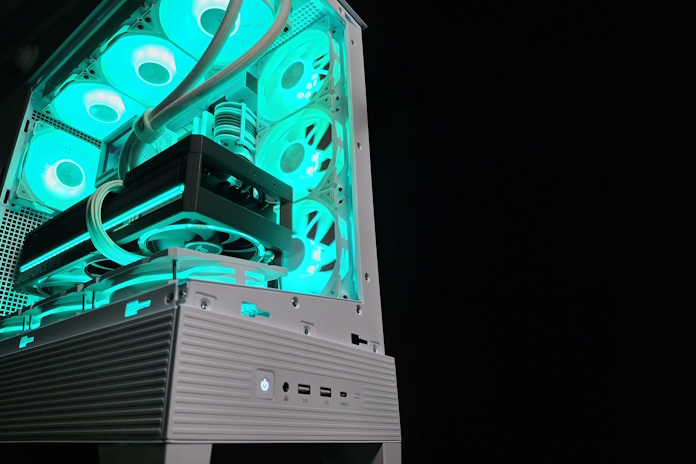Recently, PC builder H2O Computers took on a fun challenge. We sent over a crate of high-end components for a gaming build, including the potent ROG Astral GeForce RTX 5090 graphics card, the ROG Strix X870-A Gaming WiFi motherboard, and a premium white version of our ROG Ryujin III 360 ARGB Extreme. And then we challenged H2O Computers to install this top-shelf hardware in one of the most affordable PC cases that we offer: the ASUS A31.
Available for just $79.99 (USD), the ASUS A31 might not seem like a natural landing spot for some of the most premium gaming hardware out there. Is it compatible with large-and-in-charge components? Is it easy to install these components? Is it equipped for sufficient airflow? Will the finished product have a cohesive aesthetic? Let’s take a look.
First up, we’ll address those component compatibility questions. If you’re wondering if this case can handle massive graphics cards and premium AIO CPU liquid coolers, the answer is yes and yes. The 357.6mm-long ROG Astral GeForce RTX 5090 fits into the A31 with room to spare. Our only regret here was that H2O Computers started this build just a little too early for us to have a white version of this graphics card ready. If you’re planning to build a similar machine, don’t miss the variety of white cards that we offer from our ROG, TUF Gaming, and Prime lineups.
Another compatibility concern that’s worth a detailed look regards the radiators for AIO CPU liquid coolers. Most of the time, the product pages for PC cases will simply talk to you about the length of the radiators that you can install — 360mm, 240mm, and so on. But thickness is an important concern, too. Depending on the mounting points and the thickness of your radiator and its fans, you can sometimes end up in scenarios where your motherboard and radiator are squeezed in uncomfortably close to each other.
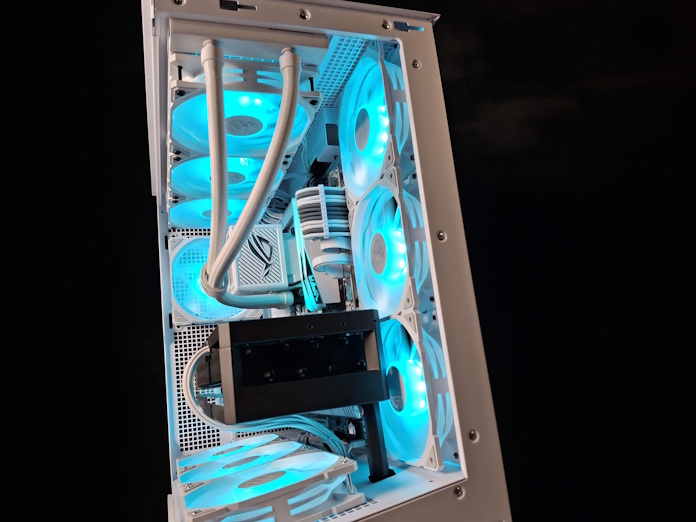
Look closely at H2O Computers’ build, and you’ll see a luxurious amount of space between the top edge of the motherboard and the radiator. And to be clear, the radiator of the ROG Ryujin III ARGB Extreme White Edition is no slim-and-trim unit. That’s a 30mm-thick radiator topped with 30mm-thick fans, a beefed-up combination that’s primed for excellent cooling. And yet it snuggles right into the A31 with room to spare. Partly, that’s due to the generous 80mm of space at the top of the chassis devoted just to liquid cooling hardware. But the case also shades the radiator mounting points toward the tempered glass side panel, leaving ample space for running wires into the cable management compartment. H2O Computers had plenty of room to run the CPU power cables and give them a nice-looking curl before they tuck out of sight.
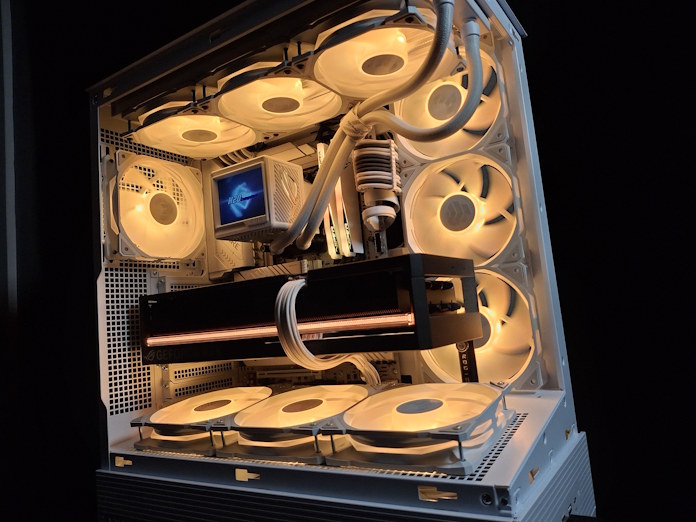
Aesthetics are subjective, but we think that the A31’s clean lines and simple surfaces play well in the overall context of this build. The tempered glass side panels ensure that all eyes are going to be drawn to the graphics card, the full-color LCD screen atop the pump housing of the AIO CPU liquid cooler, and the synchronized glow coming from the many case fans. But we think that every case should have at least a little flair, a stylistic touch that gives it personality. For the ASUS A31, that’s the angled base. The top cover of the bottom compartment is angled upward at 8° to give you a better look at the design of your bottom-mounted case fans — and to point their airflow in a direction that’s more likely to reach your entire build, not just the graphics card.
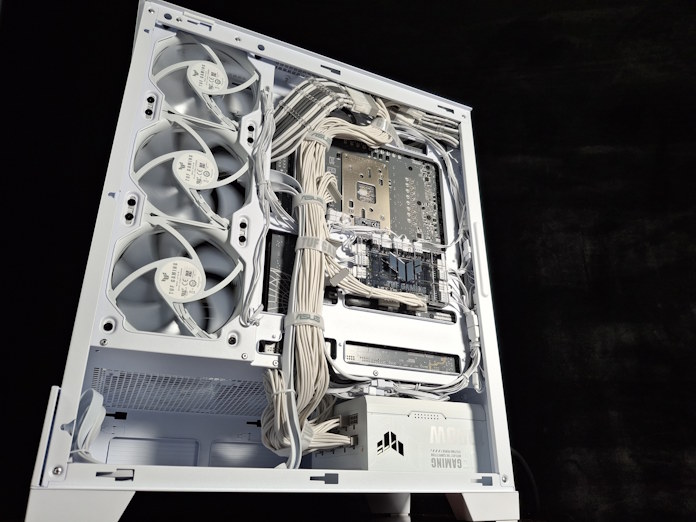
Here’s H2O Computers’ take on the cable management of this build: “It’s mint if you don’t squint.” Respectfully, we’ll disagree. Sure, a professional builder with a long history of constructing showcase PCs is going to approach this aspect of PC building with extremely high standards. What we like about the cable management of this build is that it demonstrates how easy it is to get everything tidy. With a 34mm-wide compartment to play with, built-in straps, anchor points for zip ties, and a little bit of extra space around each section of the chassis, the ASUS A31 make sure that essential cable management is a breeze.
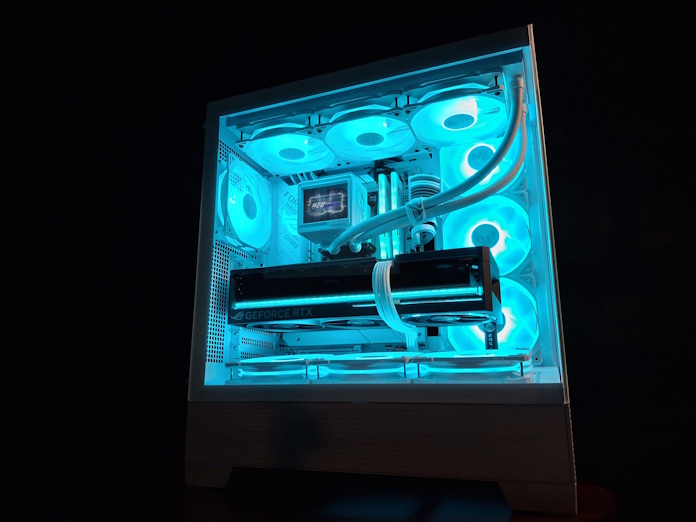
We appreciate that H2O Computers took the time to snap a few shots in a variety of color schemes, because that’s one of the main draws for building a white-themed PC. Whereas black components and surfaces stand in contrast to the glow of your RGB LEDs, white surfaces capture and reflect that illumination. Notice how the mood of the whole build changes completely with each different color. If you’re looking for a PC that can offer a fresh look at any moment, white components should be high on your shopping list.
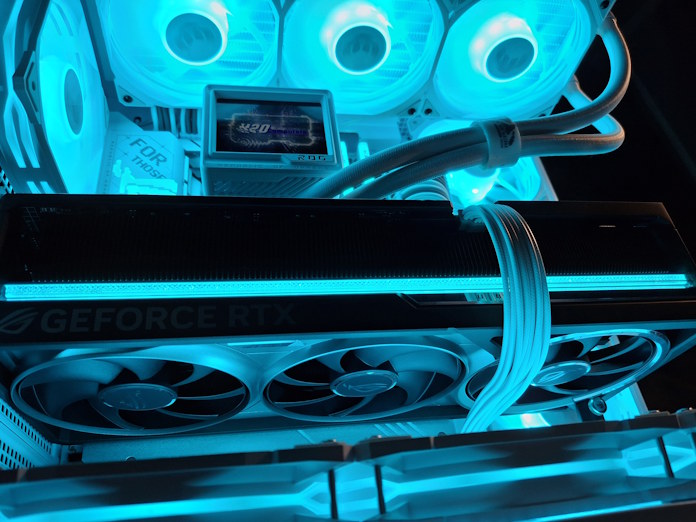
There’s a lot more that we could talk about with this build, but we’d rather let H2O Computers speak for themselves. Head on over to their Facebook page for a detailed review of the build process and performance of this PC. And if you’re looking to build a similar PC, you can find the full list of components over at PCPartPicker.
